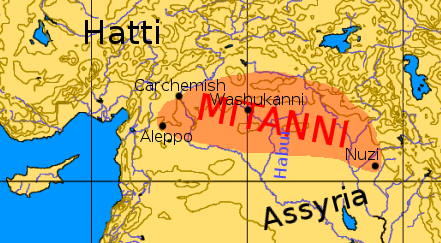And so the Harri were expelled from the lands of the Mitanni for the crimes of conspiracy (to overthrow their previous unjust king) and attempted to settle within the lands of Babylonia. However, the king of Babylon, having just lost in battle to and not wishing to anger Assyria further, captured these fugitives at once, seizing all that the Harri owned, which included two hundred chariots, in the case that it might garner favor or praise.
While the newly crowned king of Mitanni, Shuttarna III, carried out every effort to rebuild his fallen kingdom, one harsh reality remained: His people were starving.
It was at that moment when the Hittites seized the day, as their king, Shubbiluliuma, rationalized that a weaker king at the head of the Mitanni would prove a better ally than the stronger leader that was beginning to emerge. First, he fed their starving populace to gain support. Next, he led his armies into the lands of the Mitanni, defeating Shuttarna's inferior force on the battlefield, before driving out any Assyrian and Alshe forces poaching on the lands. He then installed Mattiuaza to the throne. This was the same Mattiuaza that the Harri once tried to replace Artatami II with.
As a price for his efforts, the Hittite king presented conditions in which the newly crowned king of the Mitanni, Mattiuaza, took his daughter in a royal marriage, thusly joining their houses. This was a play that the Egyptians failed to secure with the Hittites earlier that could have prevented a fatal enemy.
Throughout the 1350s and beyond, the Near East was rapidly changing:
- In 1352 B.C. Egypt's pharaoh died. By the time of his passing, all of Syria and Palestine had broken free.
- Once driving the Assyrians and her allies from Mitanni lands, King Shubbiluliuma secured successor plans for his two sons, Murshil II and Arnuwandash II, both young men with fiery blood, who were honored with important tasks in service to the Hittite state.
- Murshil traveled to the former Amorite lands within Syria and with aid of the local Ammuru, thwarted an attempted coup, and restored order to the local region just south of Aleppo, placing it within Hittite control.
- While Assyria's pride been harmed in their desperate retreat, their physical wounds and casualties were minimal. With the Kassites of Babylon still cooed to friendly relations, on the heels of their embarrassing defeat on the Tigris, Assyria turned its eyes eastward, and to the direction of Elam.






